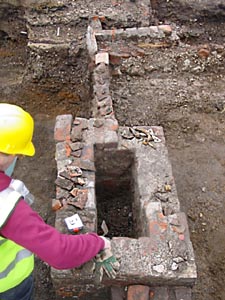|
ARCHAEOLOGY |
||
|
Site clearance and archaeological surveys at the Horsebridge located a number of hitherto unknown underground structures.
An existing live surface water sewer crosses through the sluice chamber, & this is probably the reason why it is now blocked up. It is possible that the chamber may also run under the Browning's Yard part of the site, but this will not be known until work commences on this section of the project in 2003.
When the floor of the Re-Assembly Rooms was removed significant quantities of low-grade asbestos sheeting was uncovered. The building sustained bomb damage in the war, & it is thought that the material uncovered was originally the roof, which had been covered over as part of post war repairs.
Swale & Thames Archaeological Survey Company also undertook further archaeological fieldwork on the southern section of the site. Excavations adjacent to Sea Wall again located the clay bank of the 19th century sea ditch & bank, which formed the sea defences. Following the silting up of the ditch, a brick lined culvert has been constructed in the base of the ditch & sealed with a series of levelling dumps. These had been cut through by the foundations of the more recently demolished buildings. |
||
| <BACK |
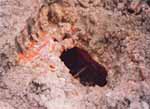 A
section of redundant sewer was discovered under the old Victorian
slipper baths, on the corner of Sea Wall & Horsebridge Road. Built
from red brickwork, the sewer was approximately 3' high & 11/2'
wide.
A
section of redundant sewer was discovered under the old Victorian
slipper baths, on the corner of Sea Wall & Horsebridge Road. Built
from red brickwork, the sewer was approximately 3' high & 11/2'
wide. 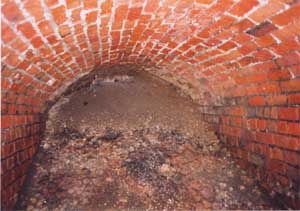 The
sewer led into a larger sluice chamber under the Horsebridge Road,
which was approximately 6' high & 6' wide. This would have been
used to temporarily store wastewater from the slipper baths, before
being discharged into the sea.
The
sewer led into a larger sluice chamber under the Horsebridge Road,
which was approximately 6' high & 6' wide. This would have been
used to temporarily store wastewater from the slipper baths, before
being discharged into the sea. 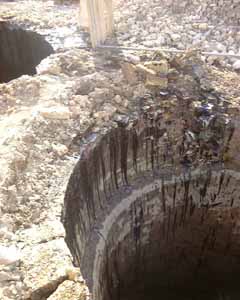
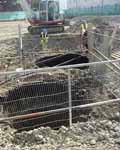 Under
the hardstanding in front of the old Ambulance station further evidence
was found of the site's past. Initial investigation suggested there
were two water storage tanks, probably used to serve the ambulances
& fire tender which were housed close by. However, when the concrete
lids were removed it revealed two substantial interconnected chambers
(10m deep, 3m diameter). These too are of brick construction, &
are probably Victorian. The chambers were pumped out which revealed
that it was in fact an artesian well. The chambers therefore fill
up naturally using the water table pressure, with clean ground water.
Under
the hardstanding in front of the old Ambulance station further evidence
was found of the site's past. Initial investigation suggested there
were two water storage tanks, probably used to serve the ambulances
& fire tender which were housed close by. However, when the concrete
lids were removed it revealed two substantial interconnected chambers
(10m deep, 3m diameter). These too are of brick construction, &
are probably Victorian. The chambers were pumped out which revealed
that it was in fact an artesian well. The chambers therefore fill
up naturally using the water table pressure, with clean ground water.
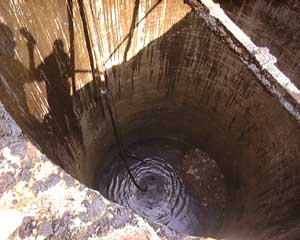 The
wells were carefully capped & backfilled prior to commencement of
the piled foundations, the layout of which was altered so as not
to damage the wells.
The
wells were carefully capped & backfilled prior to commencement of
the piled foundations, the layout of which was altered so as not
to damage the wells. 